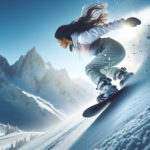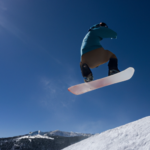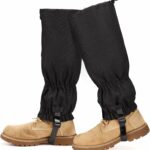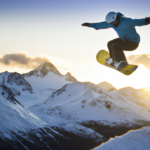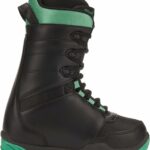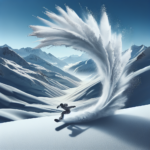Imagine slicing through the snow with the cold wind rushing past your face, the snow-clad trees blurring past and adrenaline coursing through your veins. You’re all geared up and you’re ready, but there’s just one challenge left to conquer on your journey to becoming a seasoned snowboarder – mastering the art of riding flat on a snowboard. This article is your go-to guide to achieving that feat and embracing the thrill of flat snowboarding. It offers detailed advice, useful tips, and step-by-step techniques, making the art of flat snowboarding as clear as a day on a mountain top. Whether you’re new to the slopes or just want to fine-tune your skills, this absorbing guide will transform you into an expert flat snowboarder.
Understanding Riding Flat on a Snowboard
Riding flat on a snowboard is a snowboarding technique that often serves as the foundation for many other techniques. It involves sliding down a snow-covered slope with the snowboard’s base in complete contact with the snow, not putting an angle or edge into the snow. Many beginners think that just because it’s an elementary style, it’s simple. But that’s not a given; it needs a great deal of balance, control, and composure.
Differentiating between Flat Riding and Other Techniques
Flat riding may seem similar to other styles, but it has some subtle differences that set it apart. Unlike carving or jibbing, it doesn’t involve putting an edge into the snow or performing tricks on rails and boxes. Instead, it’s all about gliding smoothly with your board flat on the snow. It’s a fundamental technique that introduces you to the art of balancing and steering your snowboard.
Importance of Mastering Flat Riding in Snowboarding
Mastering flat riding is crucial for every snowboarder. It serves as the basis upon which other complicated techniques are learned, and it is often the first technique taught to beginners. Also, it’s essential when traversing across flat sections of a mountain or connecting turns on a mellow slope. Without it, you might find yourself falling often or having difficulty navigating the terrains.
Common Mistakes when Riding Flat on a Snowboard
There are several mistakes that beginners often make when attempting to ride flat. These include leaning too far back, which can cause the tail of the board to dig into the snow, and bending at the waist instead of the knees which can throw off your balance. Another common mistake is not shifting your weight correctly between your front and back foot, which can lead to uncontrolled turns or falls.
Pre-Preparation for Flat Snowboarding
Before you head out to the slopes, there’s some preparation that you need to do to ensure a successful day of flat snowboarding. This doesn’t just include getting your skills down, but also making sure that you have the right equipment and understand the conditions you’ll be snowboarding in.
Correct Snowboarding Attire
When snowboarding, it’s crucial to dress in layers. Start with a base layer that wicks sweat away from your skin, followed by a middle thermal layer, and top it off with a water- and wind-resistant outer layer. Don’t forget your waterproof snowboard pants, gloves, socks, and a warm hat or helmet, as well as goggles for visibility.
Ensuring Gear is Functional
Before you head out on the hills, you must ensure your gear is functional. Your snowboard should be waxed, and your bindings should be properly attached and adjusted to your boots. If you’re unsure of anything, do not hesitate to consult with a professional.
Weather Conditions and Selecting Slopes
It’s crucial to pay attention to the weather and snow conditions. If it’s a sunny day with fresh powder, you’re in for a real treat. But if it’s icy or slushy, it can be tricky especially for a beginner. Make sure to choose the slope that’s appropriate for your skill level.
Safety Measures for Flat Snowboarding
While snowboarding is undeniably exhilarating, it’s also a sport that carries certain risks. Taking safety precautions is mandatory to prevent accidents and injuries on the slopes.
Importance of Personal Protective Gear
Wearing personal protective gear such as a helmet, wrist guards, knee pads, and tailbone protectors can indeed reduce the likelihood of injury. They absorb the impact and protect your body during a fall or collision with other snowboarders, trees, or obstacles.
Safety Protocols When Snowboarding
Just like any other sport, it’s important to follow the safety protocols when you’re out snowboarding. These include staying in control and being able to stop or avoid other people or objects. You should also keep off closed trails and stay away from out-of-bound areas.
Proper Posture for Flat Snowboarding
Keeping the right posture is not only essential for balancing and controlling the snowboard, but also for preventing injuries. Stand upright on your board, bend your knees slightly and keep your body relaxed.
Basic Flat Snowboarding Techniques
Once you’ve considered the safety measures and are ready to snowboard, it’s time to understand the basics of flat snowboarding.
Positioning Your Body on the Snowboard
Your body positioning plays a significant role in your snowboarding performance. You should keep your body aligned with the snowboard, with your shoulders and hips square to the board. Your feet should be shoulder-width apart, centred between the edges of the board and your body weight equally distributed on both feet.
Shifting Weight Efficiently
Shifting your weight efficiently is key in controlling your snowboard. When you want to speed up, lean forward a little to put more weight on the front foot. To slow down, you’ll need to lean back and put more weight on the back foot.
Finding Your Balance
Balancing on a snowboard is indeed a key flat-riding skill to master. A good trick is to keep your knees flexed and your body centred over the snowboard. This stance will provide you with the necessary balance for a successful flat ride.
Steering and Turning While Riding Flat
Steering and turning are essential when it comes to manoeuvring your board on a downhill slope.
Using Your Body to Guide the Snowboard
While flat riding, you guide the snowboard by using your body. To initiate a turn, rotate your front shoulder in the direction you want to go. The rest of your body, including your board, will naturally follow in that direction.
Creating Smooth Transitions
Smooth transitions between turns make your ride more enjoyable and less tiring. Start by tilting your snowboard on its edge, then shift your weight from your toes to your heels (or vice versa) as you change direction.
Practicing Your Turns
Just like any other skill, practice makes perfect turn. Each run down the slope is an opportunity to improve your turns. Start by making wide, gentle turns and gradually make them sharper as your skills improve.
Stopping Techniques in Flat Snowboarding
Being able to stop at will is as vital as being able to steer or balance.
Importance of Mastering Stopping Techniques
Without the knowledge of how to stop, you can easily lose control and risk injuring yourself or others. Stopping gives you the ability to control your speed, avoid obstacles and provides an understanding of how your board responds under different pressures.
How to Stop Safely While Flat Snowboarding
To stop safely, you need to apply pressure to one edge of the board. If you’re regular (left foot forward), you’ll put pressure on your heel edge to stop. If you’re goofy (right foot forward), you’ll put pressure on your toe edge.
Techniques to Avoid When Stopping
Avoid leaning too far back when you are stopping. This can cause your snowboard to slip out from under you, resulting in a fall. Instead, keep your weight centred over the board.
Advancing Flat Snowboarding Skills
Once you’ve got the basics of flat snowboarding down, you can start working on advancing your skills.
Improving Speed Control
Controlling your speed is a necessary skill for snowboarding that can only come with practice. You can control your speed by making more frequent turns and by adjusting your body posture. Leaning forward slightly will help you go faster, while leaning back will help you slow down.
Perfecting Your Turning Technique
To perfect your turning technique, pay attention to your form. Make sure you’re rotating your upper body to initiate the turn and using your knees to absorb any bumps in the snow. Remember, smoother turns equal better control.
Developing a Smooth Ride
Developing a smooth ride is all about precision and control. Your board should glide smoothly over the snow, without sudden movements or abrupt changes in direction. This might mean adjusting your body position, turning technique, or the way you shift your weight.
Dealing with Common Challenges in Flat Snowboarding
As with any sport, snowboarding has its share of challenges. Here’s how to overcome some of the most common ones.
Overcoming Fear
Fear can truly hold you back when snowboarding. But with practice, patience, and a logical understanding of the sport, you can overcome this fear. Begin learning in a safe environment, with gentle slopes, and gradually progress to steeper terrains as your confidence builds up.
Managing Speed Wobble
Speed wobble, when your snowboard starts shaking uncontrollably, can be scary. To manage this, try to keep your knees relaxed and slightly bent. Keep your weight evenly distributed over your feet, and try leaning back a bit to shift your weight towards the tail of the snowboard.
Navigating through crowded slopes can be tricky. Always be aware of your surroundings, keep a safe distance from others on the slope, and stay in control so you can stop if needed. If a slope is too crowded, you might want to find a quieter one.
Maintaining your Snowboard for Flat Riding
Proper maintenance is crucial if you want your snowboard to last and to ensure it performs at its best.
Basic Snowboard Maintenance
Basic snowboard maintenance includes cleaning the board after each use and storage at a place where it’s dry and out of direct sunlight. Regularly inspect your snowboard for any signs of wear and tear that could affect its performance.
Waxing Your Snowboard
Over time, the base of your snowboard can dry out and lose its glide. This is where waxing comes in—it replenishes the moisture in the base and helps reduce friction between the snowboard and the snow, which in turn improves your speed and control.
Handling Minor Repairs
Learning to handle minor repairs can help you save time and money. This can include repairing small scratches on the base, tightening loose screws on your bindings or smoothening out rough edges. Remember, if the damage is beyond your skills, it’s best to have it repaired by a professional.
Flat Snowboarding Tips and Tricks
Now that you’ve got a good grasp of the basics, let’s look at some tips and tricks that can elevate your flat snowboarding game.
Tips to Improve Your Flat Riding Skills
One of the key tips to improve your flat riding skills is to always look in the direction you’re going. Also, keeping your body relaxed and flexible can help you effortlessly adapt to varying terrain. And of course, practice as much as you can to perfect your stance, turns and stopping technique.
Common Tricks Done in Flat Snowboarding
When it comes to tricks, there’s a variety of things you can do, even with flat snowboarding. Ground spins, nose and tail presses, ollies and nollies are all tricks that can add a spark and excitement to your flat rides.
Expert Advice for Flat Snowboarding
Expert snowboarders often emphasize the importance of taking lessons from a certified instructor. They can provide useful insights, correct your posture and help you improve your skills more efficiently. Other pieces of advice include always keeping safety as a priority, staying patient, and enjoying the journey of learning and mastering this exhilarating sport!
- What Snowboard Bindings Should I Get? - January 23, 2024
- What Size Screws For Snowboard Bindings? - January 23, 2024
- How To Snowmobile On Water? - January 23, 2024


